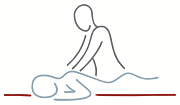Bone Structure:
Our bones play many important roles in the body. They provide our structure, protect our organs, provide an anchor for our muscles and store excess calcium. Although it’s important to build strong and healthy bones during childhood it’s also vital to maintain their health as we age. Low bone mass can be a major risk to developing Osteoporosis which can result in weak and brittle bones and lead to frequent fractures. If you are concerned about your bone health, please consult your doctor.
Our bones are continuously rebuilding, new bone is made and old bone is broken down. Minerals are re-cycled through the body. When you’re young, your body makes new bone faster than it breaks down the old and your bone mass increases. Most people reach their peak bone mass around age 30. After that, the opposite happens and your bone mass will reduce.
Bone Health:
In order to maintain a healthy bone mass as you age, the following factors should be considered:
Consume enough Calcium – We can only get calcium through our diet. It is recommended that we get 1000 to 1200mg daily. Good sources are dairy products, almonds, green vegetables, tinned fish and soy products, such as tofu. If this is not possible, consider a supplement.
Increase Vitamin D – This vitamin helps the body to absorb and hold onto your calcium. Although it’s known as the Sunshine Vitamin and the body can make some when exposed to sunlight, good dietary sources include oily fish, eggs, milk and fortified cereals.
Include weight bearing exercise into your daily routine – Walking, jogging and climbing stairs are all good ways to improve or maintain your bone density. Resistance or strength training will also help and can promote overall health benefits.
Reduce alcohol consumption and stop smoking – Research suggests that tobacco use contributes to weaker bones. Excess alcohol can interfere with the body’s ability to absorb and regulate calcium, vitamin D and hormones. These all have an effect on bone health.
Bone Repair:
If you do break a bone, the immediate bodily response is bleeding from the numerous blood vessels dotted throughout it. Much like with a wound to our skin or soft tissues, this blood collects around the fracture and provides a temporary plug to fill the gap. This plug is made up of a network of proteins and blood cells.
Next, our immune system kicks in and causes inflammation in the area. The chemicals released trigger stem cells from the bone marrow to migrate to the fracture site and begin the healing process. New bone starts to form as cartilage at the broken ends of the bone. This happens in much the same way that bone is made during normal, everyday maintenance but it is not a permanent solution as the cartilage is not strong enough to withstand the daily pressures put upon our bones.
Around 3-4 weeks after the injury, the formation of new mature bone starts. Full healing can take many weeks depending on the size and site of the fracture as well as the age and general health of the patient. During this healing time, limbs are often held in place by plaster casts or plastic splints so that the bones heal in the correct position and pain is reduced.
If you need any help or advice about leading a healthy lifestyle, please get in touch.

